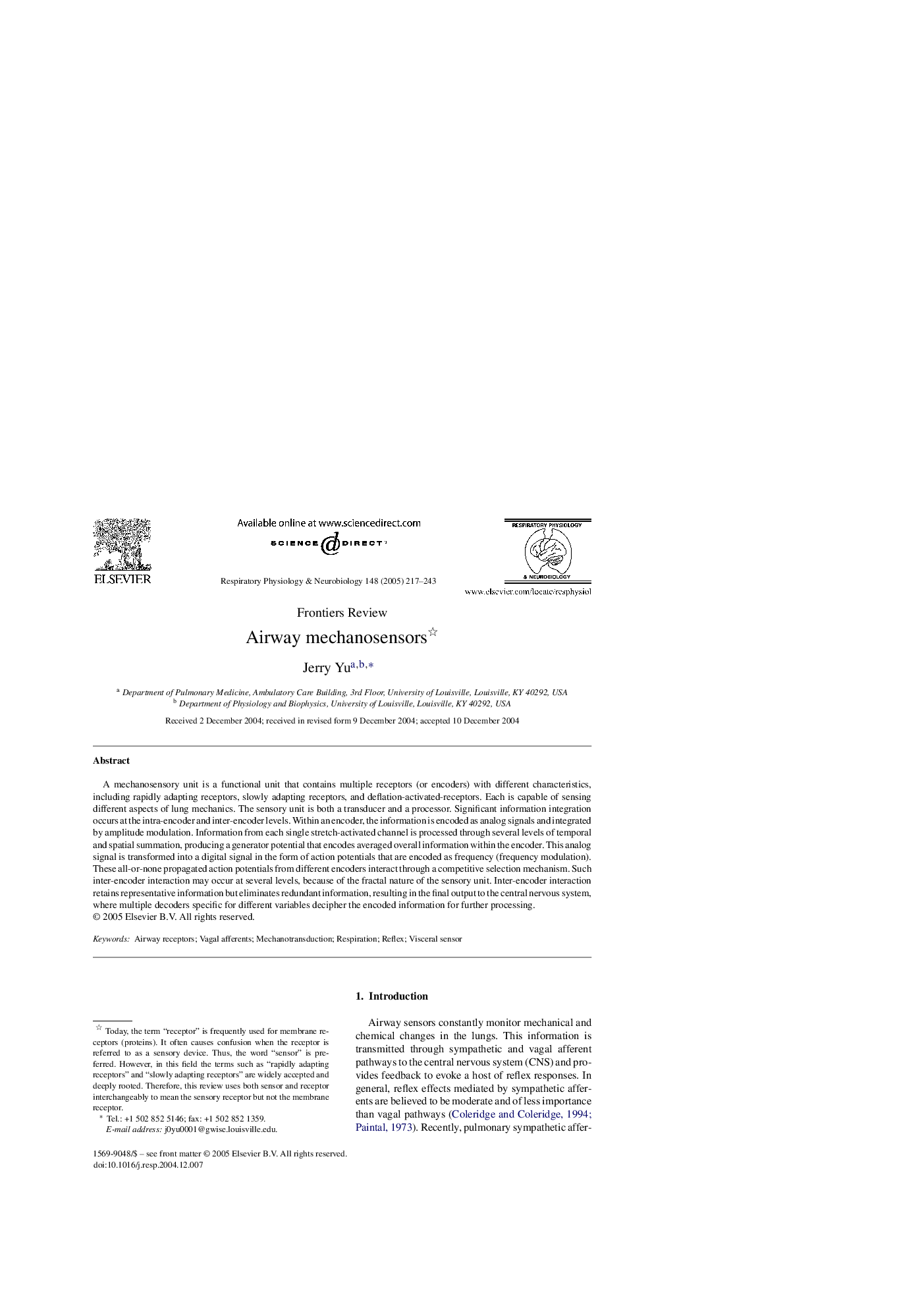| Article ID | Journal | Published Year | Pages | File Type |
|---|---|---|---|---|
| 9152297 | Respiratory Physiology & Neurobiology | 2005 | 27 Pages |
Abstract
A mechanosensory unit is a functional unit that contains multiple receptors (or encoders) with different characteristics, including rapidly adapting receptors, slowly adapting receptors, and deflation-activated-receptors. Each is capable of sensing different aspects of lung mechanics. The sensory unit is both a transducer and a processor. Significant information integration occurs at the intra-encoder and inter-encoder levels. Within an encoder, the information is encoded as analog signals and integrated by amplitude modulation. Information from each single stretch-activated channel is processed through several levels of temporal and spatial summation, producing a generator potential that encodes averaged overall information within the encoder. This analog signal is transformed into a digital signal in the form of action potentials that are encoded as frequency (frequency modulation). These all-or-none propagated action potentials from different encoders interact through a competitive selection mechanism. Such inter-encoder interaction may occur at several levels, because of the fractal nature of the sensory unit. Inter-encoder interaction retains representative information but eliminates redundant information, resulting in the final output to the central nervous system, where multiple decoders specific for different variables decipher the encoded information for further processing.
Related Topics
Life Sciences
Biochemistry, Genetics and Molecular Biology
Physiology
Authors
Jerry Yu,
